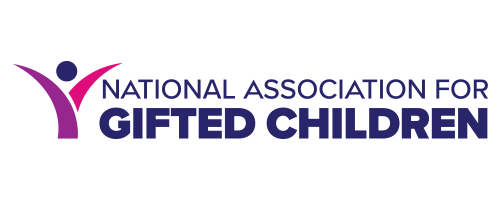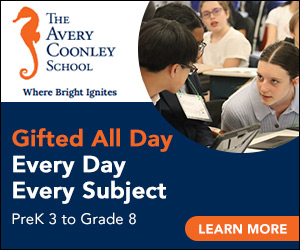Walter Burke Barbe: Highlighting NAGC’s First Elected President
By Ann Robinson & Sheyanne Smith
In honor of NAGC’s 70th anniversary, we asked Dr. Ann Robinson and Sheyanne Smith to contribute a series of blogs celebrating and remembering NAGC leaders. The second in this series shares the many contributions of NAGC’s first elected president, Walter Barbe.
Walter Barbe was the first elected president of the National Associated of Gifted Children (NAGC); he served from 1958 to 1960. Previous presidents were appointed. Barbe was democratically elected following an open call for nominations (Isaacs, 1957). He devoted both his personal and professional life to supporting children and adolescents as they moved along a talent development trajectory. His involvement in the field was wide-ranging and touched on key areas of our history that are often less well-known than they should be.
It may be that his gentle and modest demeanor contributed to his understated story in gifted education, but his educational contributions are well-known in other areas of education such as language arts and, later in life, through his work on local history in his Pennsylvania hometown. His highlight reel of contributions is not strictly academic—Barbe used his diverse skills and interests to help families and communities as well as schools.
Walter was born on October 30, 1926 in Miami, FL, and died in the small Pennsylvania town of Honesdale, on October 15, 2020. He lived until just short of his 94th birthday (obituary). His passing was movingly noted in a memoir written by his friend and the editor of his hometown newspaper; Barbe was an inspiration who focused on making the world a better place to the very end of his long, creative life.
According to Jennifer Jolly (personal communication, June 26, 2024), who was in communication with Barbe in his later years, he was a beneficiary of the GI Bill following World War II and considered it a highlight of his life that he was able to attend college and graduate school.
Barbe’s Northwestern dissertation is a marvel to the modern-day reader. He investigated the legendary Cleveland Major Work Program and wrote lively, derivative texts about his experiences in what he termed an enrichment program. He followed up with graduates of the Major Work Program and secured a retrospective understanding of an early, rigorous program for talented learners. His assessment? Good curriculum under the guidance of inspiring teachers works; students remember these experiences in school with fondness and enthusiasm (Barbe, 1954). Under the tutelage of Paul Witty, Barbe left his doctoral program with twin interests in gifted education and reading education. He brought both to fruition across his lengthy and productive life.
Barbe is probably best known to the gifted education community as the editor of classic texts in the field, Psychology and Education of the Gifted: Selected Readings, and subsequently, with his coeditor, Joseph Renzulli, a second edition (Barbe & Renzulli, 1975). A quick scan of the 1975 table of contents reads like a “Who’s Who” in gifted education. The section on the history of giftedness includes Tannenbaum and Witty, the mentor of Martin Jenkins. A section on concepts in the field provides chapters by Torrance, Ward, and Barbe himself. In a section on identification, we find entries on domain specific talents as well as cultural diversity. Feldhusen, Kaplan, Stanley, and Treffinger all appear in chapters on creativity, curriculum, instruction, and talent development. Carolyn Callahan gets in a word about gifted girls at the tail end of the text. If this classic is not on your shelf, you’re encouraged to find a copy and stroll through the highlights of our rich history.
Parents and educators who grew up in the 1950s, 1960s, 1970s, and 1980s were exposed to the magazine, Highlights for Children. Edited by Walter Barbe from 1971-1989, Highlights could be found in homes, schools, doctors’, and dentists’ offices across the nation (Jennifer Jolly, personal communication, June 26, 2024). Walter understood the power of good reading material in the hands of a child. Highlights’ philosophy, “Fun with a Purpose,” aligned with his belief that children learn best when they forget they are learning. Through his work on Highlights, Walter Barbe emphasized the need for intentional selection of reading materials, and this emphasis, informed by his work in Cleveland, provided a foundation for selecting readings that were more appropriate for gifted learners (VanTassel-Baska, 2014). His Psychology and Education of the Gifted co-editor, Joe Renzulli, said of Barbe: “Although Walter was a well-known writer and speaker in the gifted education field, whenever he came to speak at UConn events or local conferences, he always asked us to take him to visit schools. He loved talking with students and teachers; and told me that this was where some of his best ideas came from” (Personal communication, August 15, 2024).
Barbe’s generosity appeared in his personal life as well as his professional one. While living in Chattanooga, TN, the youthful academic and bachelor adopted a son, Frederick. In seeking out the best ways to foster Frederick’s talents and to encourage wise college choices, Barbe encountered a high school counselor—Marilyn Wood. She apparently provided excellent advice; they were married in 1967 when Barbe was 41 years of age. Son Frederick, who studied art and whose pieces were displayed in museums and galleries, followed his passion and became a special education teacher with a career centered in Maryland (obituary).
Although we know Barbe as an author and prolific editor in gifted education and as the first elected president of NAGC, his life was highlighted by other enthusiasms. He loved and understood the power of place. In rural Honesdale (population 4,469 in 2022) and its neighboring White Mills, he contributed and even spearheaded efforts to restore or preserve numerous local industrial locations and artifacts associated with the glassmaking industry, the canals, and sawmills in the region. Among his many lifelong honors—such as receiving the Distinguished Service Award from the International Reading Association—is a charming memorial tribute to one of his many interests—the art and craft of glassmaking. Shortly after Barbe passed away, a vintage punchbowl and matching cups were donated in his honor to the Dorflinger Glass Factory Museum in Pennsylvania. The museum wanted to find a way to further honor the contributions of the Barbes, so they now boast a permanent glass exhibit aptly named “The Walter and Marilyn Barbe Wayne County Glass Gallery.” The cut glass pattern of the memorial punchbowl? Brilliant. It is a fitting description of the creative, compassionate, and committed life of Walter Barbe, NAGC’s first elected president.
References
- Barbe, W. B. (1954). A follow-up study of graduates of special classes for gifted children [Doctoral dissertation, Northwestern]. ProQuest.
- Barbe, W. B. (Ed.). (1965). Psychology and education of the gifted: Selected readings. Appleton-Century-Crofts: New York.
- Barbe, W. B., & Renzulli, J. S. (Eds.). (1975). Psychology and education of the gifted. Irvington: New York.
- Isaacs, A. F. (1957). New N.A.G.C. officers to be elected. The Gifted Child, 4.
- VanTassel-Baska, J. (2014). Curriculum issues: Back to the future—Differentiated curriculum in the rear view mirror. Gifted Child Today, 37(3), 200–201.
Ann Robinson, Ph.D., is the Distinguished Professor and Founding Director of the Jodie Mahony Center for Gifted Education, University of Arkansas at Little Rock. Dr. Robinson is also a past NAGC President, former editor of Gifted Child Quarterly, and the 2023 recipient of the 2023 Ann F. Isaacs Founder’s Award.
Sheyanne S. Smith is the High Ability Learning Specialist for the Nebraska Department of Education. She holds a bachelor’s of English and a Master’s of Arts in Teaching from Belmont University, and a Master’s of Education in Gifted, Talented, and Creative Education from University of Arkansas Little Rock. She is currently a doctoral student at William & Mary, specializing in gifted education administration.


